Having been primarily shooting with the Nikon D810 ever since the camera was announced (which as of today is my primary camera for most types of photography I am engaged in), I have been compiling a list of features that I would like to see on the upcoming Nikon D820, so I decided to share this list with our readers. My goal with this article is not only to share my list of most wanted features, but also to potentially expand it based on the feedback I get from other D800/D800E/D810 shooters out there. Once we put together a list of highly desirable and realistic / implementable features, I am planning to send a letter to Nikon to request the features to be incorporated into the future design of the camera. I think as a large community of Nikon shooters, we should do our best to reach out to Nikon directly and put in our requests, so that the company knows what its dedicated user base expects from the future generations of their cameras.

So without further ado, let’s go ahead and kick off what I have gotten so far!
1) RAW Histogram and Blinkies
This one has been on my wishlist for a while now and it is not just limited to the Nikon D820 – we should see this feature on every digital camera! RAW histograms and blinkies are important, because that’s the only way to actually see if data is getting lost during the process of capturing images. Sadly, what we see on cameras today, is histogram and blinkie output from JPEG images that are embedded into RAW files. The moment you start changing your camera settings, the histogram changes, which means that you end up looking at data from 8-bit images, which has no way of showing what is actually happening to the 12+ bit RAW image.
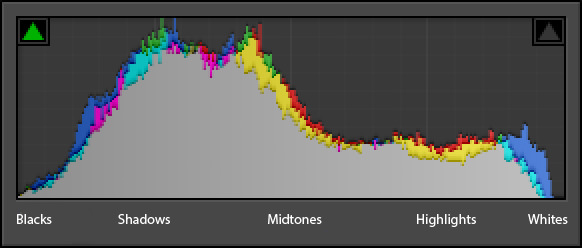
You might be seeing overexposure on the histogram and the blinkies, when in reality, all of the data might be fully preserved in the actual RAW file. Nikon could be a true pioneer in the camera industry, by implementing true RAW histograms and blinkies first! It would be wonderful if Nikon did it right from the start though, which means RAW histogram output for each color channel, similar to what we see below (sample output from RawDigger):
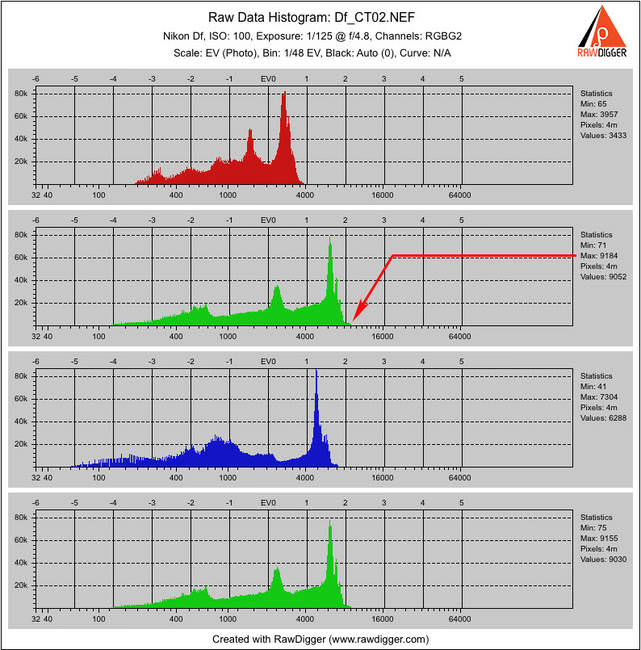
And how awesome would it be, if blinkies were implemented differently for each color channel? Flash red for red channel loss, green for green channel loss and blue for blue channel loss. When multiple channels are lost, flash those areas white (thanks to Spencer Cox for the idea). Imagine how easy it would be to expose to the right – we would be able to make correct exposure choices without second guessing anything.
2) Exposure To The Right (ETTR) Metering
Speaking of exposing to the right, once RAW histograms and blinkies are implemented, it would be potentially possible to add a new metering preset based on this data! Imagine an extension to matrix metering, which looks at the last image captured, then suggests exposure based on the data. This could automate the process of getting the ideal exposure right on the camera, without blowing any of the highlights. And if you want to go fancy, how about reading sensor data right off sensor via live view and giving ETTR suggestions?
3) Fix Menu Banks System
Nikon does it right on lower-end cameras like Nikon D610 and D750, by giving easy presets right on the camera dial, and allowing to permanently store camera settings from the camera menu onto those presets. That’s how it needs to work on every camera! Sadly, Nikon decided to go with menu banks on every pro-level camera, including the D810. With the menu banks, one has to go into the camera menu and navigate to several places to change presets. And the worst part of it is that if the photographer changes any of the camera settings, those settings stay, which means that there is no way to make permanent changes to settings in the first place. This makes the menu bank system practically useless for most photographers, including myself.
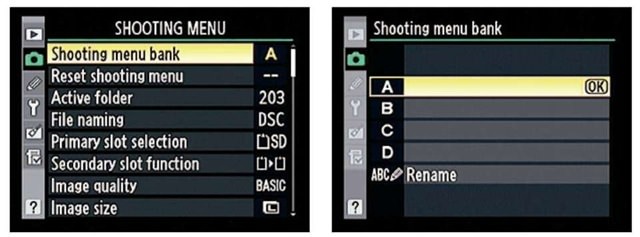
Nikon should address this problem on the upcoming Nikon D820 and in fact, on every pro-level DSLR in the future. This particular change has been requested a lot in the past!
4) Fix sRAW Implementation
When Nikon introduced sRAW initially, many of us got excited about the feature. Thinking about not only potential space savings in some situations, but also about the different options we could have when shooting with a high resolution camera like the D810, it seemed like a wonderful option. However, after we looked deeper into the sRAW format, it turned out to be more of a marketing gimmick, with larger than desired file sizes, cooked / lossy data and other problems. Does this mean that sRAW is doomed forever? It does not have to be – Nikon could make sRAW very useful by reworking it completely. If one could shoot at 36 MP in full resolution, 24 MP in medium resolution (mRAW) and say 12 MP in low resolution (sRAW), but with real pixel binning to reduce noise levels in images and reduce their physical size, how awesome would that be? And please, no stripping of important data! We do not want to see 8-bit, 10-bit or 11-bit implementations of sRAW – all data should be preserved, which means storage of data in full 14+ bit lossless. This way, we do not have to worry about posterization and other related artifacts, as we had previously seen on Sony mirrorless cameras:
5) Live View Split-Screen Display Zoom Enhancement
When shooting landscapes and architecture, many of us have to calculate hyperfocal distance in order to get the entire scene look sharp. While the process is not very difficult, whenever calculation of distances is involved, there is always a chance for error. With the introduction of the D810, Nikon gave us a wonderful feature called “Split-Screen Display Zoom”, which allows one to get extremely accurate results in regards to calculating the best hyperfocal distance. In Live View mode, the screen is split into two halves and one can look at two areas of the frame independently and rotate the focusing ring in order to get both areas as sharp as possible while zoomed in:
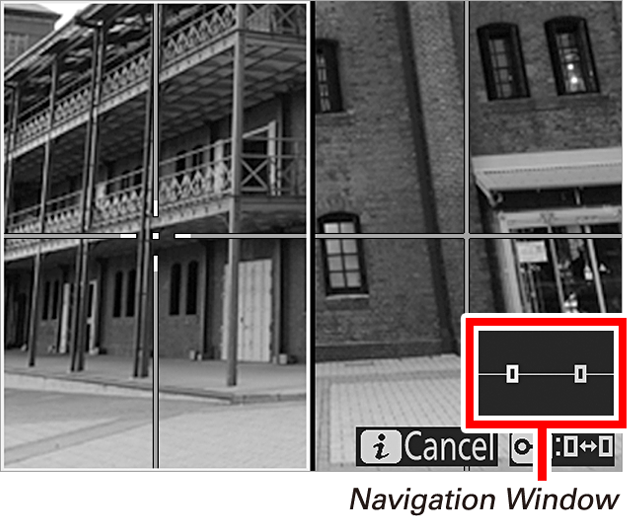
I personally found it incredibly useful, as it leaves no room for error – one can really nail focus with this feature. However, there is one huge drawback to the way Nikon implemented the Split-Screen Display Zoom – it only allows for simultaneous vertical movement of the zoomed in area, which makes this feature only useful for shooting in vertical orientation. As soon as you switch to horizontal orientation, you can no longer look at both the foreground and the background at the same time! Nikon should really address this problem by allowing one to move the focused area independently of each other. This should have been addressed via a firmware update on the D810, but I really hope that Nikon fixes the issue on the upcoming Nikon D820.
6) Long Exposure Bulb Mode
It really upsets me that every time I need to shoot exposures longer than 30 seconds, I must use an external camera trigger / accessory. I do have one and I use it when needed, but sometimes I forget to grab it with me, and other times, it just takes time to pull it out, screw it in and get it going. Why can’t we have a camera menu option for shooting exposures longer than 30 seconds? We don’t have to use manual dials anymore for selecting shutter speeds, so why not remove this silly limitation and allow one to dial any exposure? I would love to be able to pick shutter speeds in 5 second increments (35, 40, 45, 50, etc) directly through the camera dial. Nikon pretty much liberated me from the remote shutter release with the introduction of Exposure Delay mode and Electronic First Curtain Shutter; now it is time to implement 30+ second exposures for me to leave this accessory at home permanently!
7) Lower ISO / Simulated Low ISO
I love the ability to shoot ISO 32 on my Nikon D810. Yes, I know it is a simulated / non-native ISO (the base ISO on the D810 is 64), but why not give us options to shoot other boosted ISOs like ISO 16, 8, 4 and 2? If this was possible, I would do away with using ND filters, which would save a lot of time and hassle in the field!
8) In Body Image Stabilization (IBIS)
By now, we know it is quite possible to build image stabilization right into the camera. Sony has done it with their second generation full-frame mirrorless cameras like the Sony A7R II and Pentax has done it on the Pentax K-1. Imagine how amazing it would be to shoot with all prime glass stabilized! It would make it so much more appealing to shoot with prime lenses like the Nikon 20mm f/1.8G, 24mm f/1.8G, 28mm f/1.8G, 35mm f/1.8G, 50mm f/1.8G and 85mm f/1.8G (all of which are fantastic!). The same obviously goes for all other zoom and prime lenses without VR.
One might wonder how IBIS would impact VR. Well, Sony started out with lens-based image stabilization and once they introduced IBIS, they made the two work well with each other. If Nikon finds it technically challenging to properly implement IBIS with VR, why not switch between the two? Simply disabling IBIS or VR should be relatively easy, since stabilization information is already communicated through the lens into the camera body. If the camera sees a lens with VR attached and VR is turned on, IBIS could be automatically turned off, so that the two do not conflict with one another.
9) High Resolution Pixel Shift Mode Using IBIS
Once IBIS is implemented, it opens up huge opportunities, such as high resolution pixel shift mode, where the sensor moves one pixel at a time in order to create a super high resolution image. We have seen this already implemented on some cameras like the Pentax K-1 (which works exceptionally well for still environments), so if Nikon were to add such a feature, it could be a huge selling point for many photographers. Perhaps Bob Vishneski’s satirical piece on the high resolution mode on the Nikon D800 could become a reality one day!
Pixel shift mode is amazing technology and I would love to see such a feature on the upcoming Nikon D820.
10) Ability to Charge Battery via USB Port
Having been shooting with a number of mirrorless cameras in the past few years, I have come to love the ability to charge a camera battery through camera’s USB port. Why would this be potentially important for field use? Because it allows one to use other accessories, such as external battery packs and solar power in order to charge batteries without a hassle, which is great! Many of us landscape photographers end up in places around the world that do not have reliable power sources and in such cases, being able to connect the camera via USB to charge the battery can be invaluable.
11) Backlit Buttons
Nikon typically only gives us backlit buttons on top-of-the-line DSLRs like the Nikon D5, but how many of us shoot with such cameras at night? In fact, I bet most D800/D810 users need this feature more than the D5 shooters do, simply because of the type of photography they are engaged in. Action / Wildlife photographers wrap up their shooting at night, whereas night time is when astrophotographers come out to photograph those stunning Milky Way shots:
So why not add backlit buttons to such cameras as the Nikon D810? Far more people would benefit from such a feature, particularly when shooting in very dim environments.
12) Built-in GPS
I would love to have a built-in GPS on my Nikon D810 that I could turn on and off when needed. When traveling to remote areas, it would be wonderful to know exactly where I captured images, so that I could share that information with others and potentially come back to the same location later, which I could do with accurate GPS coordinates. Sadly, Nikon has been pushing external GPS units, which are very impractical to carry around and use in the field, as they have to be connected via a wire to the camera to work. GPS is a very important feature for landscape and travel photographers and Nikon should include an integrated GPS chip in the upcoming D820. If Canon was able to do it on the new 5D Mark IV, it should be a no-brainer for Nikon to offer such comparable features.
13) Built-in, Working WiFi
The same goes for WiFi – Nikon should integrate a built-in WiFi chip on the D820! And not of the practically useless type we have seen on the Nikon D500, which did not even have an iOS app ready after the product already hit the market, but something that works seamlessly well with a number of different platforms. One should be able to easily copy images from the camera into a mobile device and use an app to be able to remotely control the camera.
14) Infrared Remote instead of 10-Pin
With everything going wireless today, I wonder how long Nikon is planning to stick to its 10-pin wired connection? I understand that moving to a wireless option might make a lot of camera accessories unusable, but how about keeping that port for a few iterations, while simultaneously offering wireless options? Nikon could easily integrate infrared and Bluetooth ports on the D820 and start moving people away from wired connections. How about making a Bluetooth remote shutter release to kick that off?
15) Fix EFCS So That It Works Properly
I love the fact that the Nikon D810 has an Electronic First Curtain Shutter (EFCS). In fact, that’s the #1 reason why I personally decided to move up to the D810 from my D800E, as I wanted to be able to completely eliminate camera shake caused by the camera shutter mechanism (which is often worse than the mirror slap). Despite the fact that EFCS is a wonderful and truly useful feature, the fact that it only works in some modes like Mirror-Up is puzzling. Why couldn’t Nikon make EFCS work in other modes such as live view? With live view, the mirror is already raised and the shutter is open, so why the camera needs to close its shutter before capturing an image is beyond me. Nikon should seriously fix this flaw in the upcoming D820.
16) Silent Shooting Mode with EFCS
While at it, why not give us a truly “Silent Shooting Mode”? Wedding photographers would love to have such a feature, particularly when shooting in churches, allowing them to capture moments without any shutter release sound. Sure, there would be limitations to such a feature when shooting movement, but if one understands the limitations, they would be able to take advantage of such features when needed.
17) Shutter Speeds Faster than 1/8,000
With a proper EFCS implementation, which would put the D820 in live view mode, it would also be possible to utilize shutter speeds faster than 1/8,000 of a second. I am sure this one would be a big hit among portrait photographers, as they would no longer need to carry ND filters with them in order to shoot flash in daylight conditions when using lenses at large apertures. Another way to save time for a pro in the field!
18) Tilting, Touchscreen LCD and Pinch Zoom
A tilting screen on any digital camera is a very nice feature to have, because of the ability to capture both stills and video at odd angles, something that is much harder to achieve with a fixed LCD screen. Traditionally, tilting screens have been used on non-weather sealed point-and-shoot and entry-level DSLRs, so when the same feature started appearing on higher-end DSLRs, some photographers resisted the idea, making assumptions that a tilting LCD screen would compromise both weather sealing and build quality of the cameras. In reality, that’s certainly not the case – as we have seen by now, professional-level full-frame cameras like the Pentax K-1 feature tilting LCD screens without compromising on anything.
My Nikon D750s feature a tilting LCD as well and so far I have not had a single problem with this feature, after shooting both video and stills for many months. So there is no reason to exclude a tilting screen from high-end DSLRs like the Nikon D820! It would be nice if Nikon made the tilting angles a bit more versatile though, perhaps similar to what Pentax has done, but even the same tilting screen from the D750 would be good enough to start with.
19) 4K Video
This one is certainly not a priority for most stills shooters, but considering that every major camera announcement puts 4K in the headline, it would make sense for Nikon to feature 4K video recording on the Nikon D820. If Nikon can do it right, but giving us 4K at 30+ fps, uncompressed HDMI output, zebra and S-Log features, it would make the D820 a highly desirable camera among not only photographers, but also videographers. Even if one shoots 1080p video exclusively, being able to shoot at 4K opens up a lot of opportunities to increase video quality – one can downsample 4K footage to 1080p in order to yield crisp video footage. The advantage is similar to shooting with a high-resolution camera.
20) On-Sensor Phase Detection Pixels
When compared to mirrorless cameras, DSLRs use phase detection AF system that is located on the bottom chamber of the camera, as explained in our article on how phase detection autofocus works. Because of this, DSLRs can have potential accuracy issues with focusing, especially when lenses or even worse, camera AF system are not properly calibrated. We have written a detailed article on how to calibrate lenses and as you may already know, the process can be both overwhelming and frustrating, especially for beginners.

Why not integrate phase detection pixels on the camera sensor directly, as mirrorless camera manufacturers have been doing? This may not sound like a good idea for a DSLR, as the camera would have to be in live view mode to make use of such a feature, but it does present a few advantages. First, it allows the camera to focus much quicker than contrast detection AF in live view mode, which can be very useful for shooting video. Canon has been integrating on-sensor phase detection for this reason alone in its current generation DSLRs. Second, once phase detection sensors are located in two places, the camera can potentially take advantage of the two. Why not use the on-sensor phase detection to calibrate the camera AF module and lenses? Sensor is what actually captures images, so it would make sense to use the same plane of focus for accurate calibration of the AF system. Third, if Nikon implemented on-sensor phase detection, it would allow the company to improve the AF speed and accuracy of the system for the future mirrorless systems Nikon might be working on. Lastly, combining intelligence of the sensor output with on-sensor phase detection allows for many focusing opportunities, including face / eye / smile detection, etc, which are currently not possible with traditional phase-detection AF systems found on DSLRs.
21) Focus Trapping
This one is certainly a “nice to have” feature, something I found to be really cool when shooting with Pentax cameras. As soon as a subject gets in focus, the camera automatically takes a picture. Nikon could take this one to the next level, by combining on-sensor phase detection in live view to completely nail focus on the subject or its features before the image is taken.
22) Automated AF Fine Tune / Enhancement
We have already seen Nikon’s attempt at automating AF fine tune on the D500, but I feel like this could be improved even further. We know that lens calibration only works for specific distances and focal lengths, so calibration is not as simple as we would like it to be. Nikon should give us the ability to store AF fine tune for each focal length on zoom lenses and allow calibration of different subject distances. But it would be a nightmare if we had to do it manually – Nikon should help us automate the process, by giving us a good guidance system that tells us where to move and what focal length to change to during the calibration process. Images are taken, evaluated and re-taken to get the best out of each focal length and distance. If Nikon can do it, it will greatly enhance the AF system precision and keep DSLR shooters from having to send gear back to Nikon. Ideally, Nikon should allow lens calibration using a simple USB dock, similar to what Sigma has been doing on its latest generation lenses. Combine that with the automated AF Fine Tune feature and we will end all focusing frustrations in the field.
23) Dual XQD or Dual SD Option
Nikon should seriously consider moving away from CF cards completely. We already know that CF is not fast enough for the D5, so why continue giving us a single CF and a single SD card slot? I love being able to use two SD memory cards on my D750 – I don’t need to worry about carrying two different memory card types with me when traveling. That’s not the case with my D810 – if I want to shoot to two cards, I have to use one CF and one SD card, which is a nuisance. I would rather have either two CF or two SD cards. Better yet, give us the ability to choose between dual XQD and dual SD option on the D820. In fact, why not make it easy to swap out memory card modules? Nikon could make the D820 semi-modular this way and sell dual XQD, dual SD and even dual CF option for those who have a bunch of CF cards they want to use.
Although the list is quite exhaustive, I am sure there are a few other features / tweaks here and there that I totally missed. Please let me know what you would like to see added into the future Nikon D8x0 series cameras.
The post Nikon D820 Wishlist appeared first on Photography Life.
from Photography Life https://photographylife.com/nikon-d820-wishlist

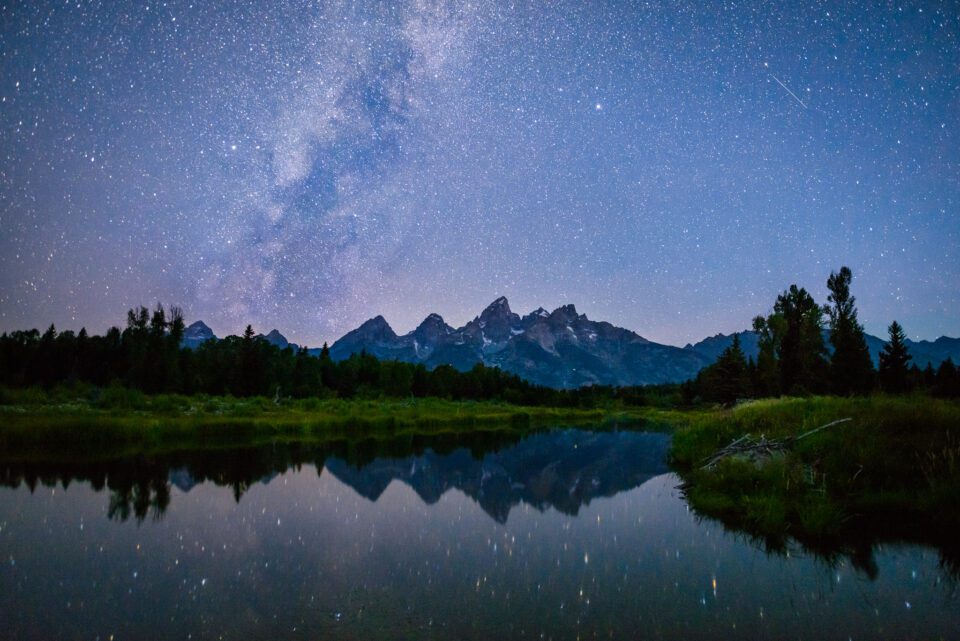

No comments:
Post a Comment